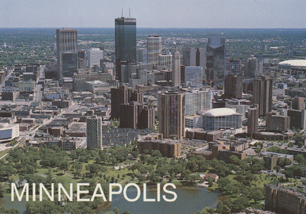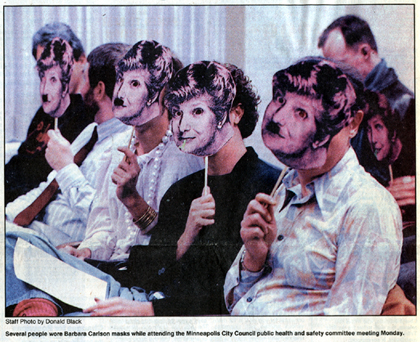Difference between revisions of "Loring Park"
(table) |
(table) |
||
| Line 2: | Line 2: | ||
'''Irregularly shaped by 15th Street, Harmon Place, Willow Street, and Hennepin Avenue''' | '''Irregularly shaped by 15th Street, Harmon Place, Willow Street, and Hennepin Avenue''' | ||
</div> | </div> | ||
| + | |||
| + | {| {{prettytable}} | ||
| + | ! | ||
| + | ! | ||
| + | |- | ||
| + | | The most apparent historic site in Twin Cities GLBT history began a radically different life as “Central Park,” the crown jewel of a suburban paradise. For most of the 19th century, Minneapolis barely stretched past Grant Street—outlying developed areas were reserves of the opulent and privileged. | ||
| − | + | Those unable to afford horse-drawn carriages or fare on steam-powered trolley cars kept close to the river. The city’s wealthiest families lived on the outskirts to avoid the poor, and thus, the unsavory elements of urban living. | |
| + | | [[Image:Svc_loring.jpg]] <small>'''<div style="text-align: center;"> | ||
| + | A postcard of Loring Park and the Minneapolis skyline in 1989. | ||
| + | </div>'''</small> | ||
| + | |} | ||
| Line 25: | Line 35: | ||
| − | While cruising is no longer the park’s mainstay, Loring is home to the Twin Cities Pride Festival and remains the cultural heart of the queer community. | + | While cruising is no longer the park’s mainstay, Loring is home to the [[Twin Cities Pride Festival]] and remains the cultural heart of the queer community. |
|} | |} | ||
Revision as of 12:15, 6 March 2010
Irregularly shaped by 15th Street, Harmon Place, Willow Street, and Hennepin Avenue
Minneapolis’ booming population and the development of affordable public transportation fueled urban expansion by 1900. The area changed drastically in just three decades, when wealthy residents vacated the Loring Park area and settled atop Kenwood Hill, leaving Loring open for dense development. In the 1910s and 20s, mansions gave way to familiar uses: apartment hotels, early auto dealerships, office buildings, and apartment houses. With this change came a concurrent change in the park’s populations and activity.
Many extant queer neighborhoods cannot establish a beginning to their queer activity, and Loring Park is no exception. Community historian Robert Halfhill suggested that cruising visibly began after the Second World War’s end —and this is likely true—yet the Gateway District remained the core of queer Minneapolis until its demise in the early 60s. Loring Park was likely a residential settlement, as opposed to the purely bar-based Gateway—It came to eminence as newly Gay-identified men created community needs for their neighborhood.
| Minneapolis City Councilperson Barabara Carlson, who represented Loring Park in the late 1980s, was admonished by Loring Park residents for her support of an anti-cruising ordinance. Photo from the Minneapolis Star-Tribune, courtesy of the Jean-Nickolaus Tretter Collection. |
This “Gay Ghetto” survived until the late 1970s and comprised three camps: middle-class men lived in “Homo Heights” on or near Ridgewood; the poor lived East of Willow Street to Steven’s Square; and the wealthiest residents were dallying married men who lived in the “Homolayas,” also known as Kenwood Hill.
|
This page is still under construction. -SVC
Part of Minneapolis/St. Paul, MN: 100 Queer Places in Minnesota History, (1860-1969), (1969-2010)

